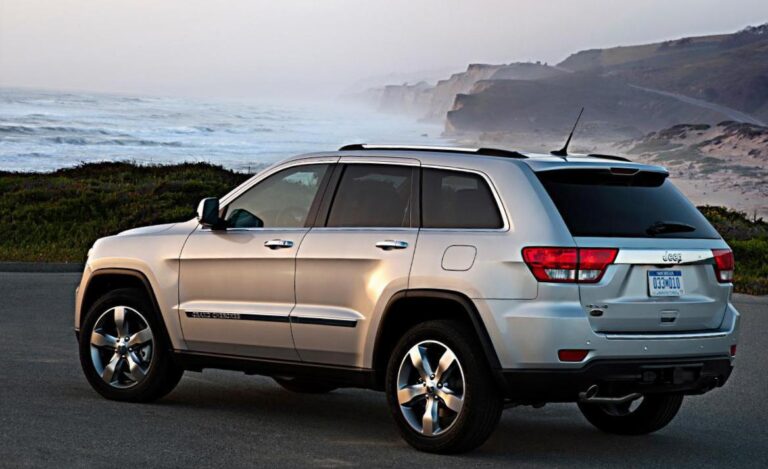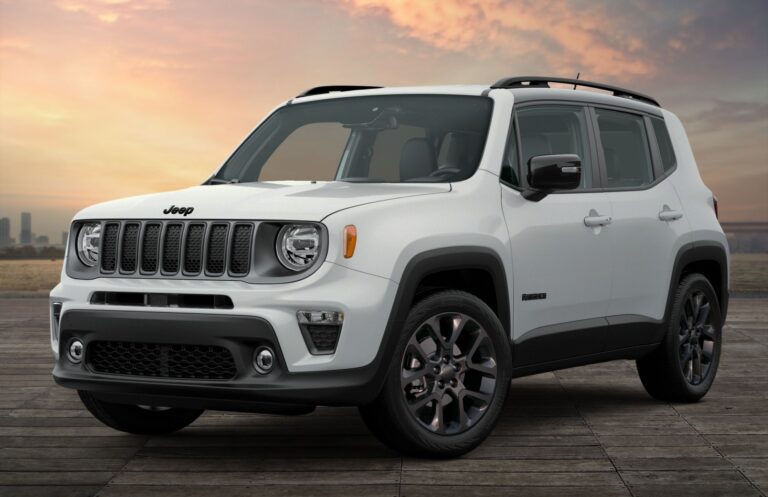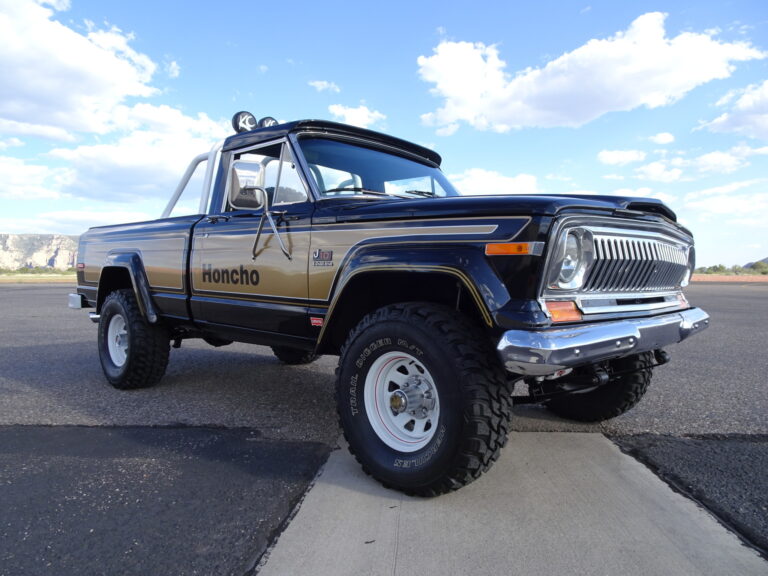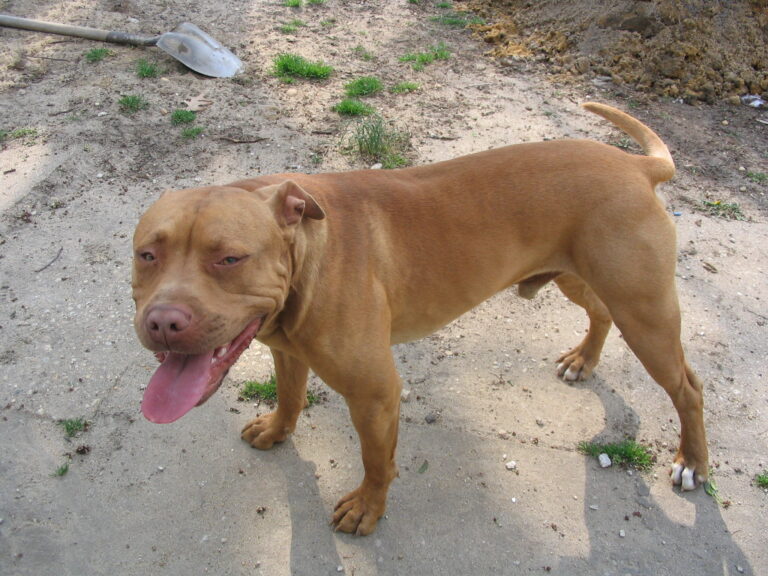How Much Oil In 2012 Jeep Wrangler: A Comprehensive Guide to Maintaining Your Iconic Off-Roader
How Much Oil In 2012 Jeep Wrangler: A Comprehensive Guide to Maintaining Your Iconic Off-Roader jeeps.truckstrend.com
The Jeep Wrangler, an undisputed icon of adventure and capability, holds a special place in the hearts of automotive enthusiasts worldwide. For owners of the 2012 model year, a pivotal point in the Wrangler’s history, understanding its specific maintenance needs – particularly concerning engine oil – is paramount. This article serves as a comprehensive guide, meticulously detailing how much oil your 2012 Jeep Wrangler requires, why it matters, and how to ensure your rugged companion remains in peak operating condition for years of trails and tarmac ahead.
Engine oil is the lifeblood of your vehicle. It lubricates moving parts, reduces friction and wear, helps cool the engine, cleans deposits, and protects against corrosion. Using the correct type and quantity of oil is not merely a recommendation; it’s a critical requirement for the longevity, performance, and reliability of your 2012 Jeep Wrangler’s powerhouse.
How Much Oil In 2012 Jeep Wrangler: A Comprehensive Guide to Maintaining Your Iconic Off-Roader
The Heart of the 2012 Jeep Wrangler: Engine Types and Oil Capacity
The 2012 model year marked a significant upgrade for the Jeep Wrangler. Prior to 2012, Wranglers were powered by the 3.8L V6 engine. However, starting with the 2012 model year, Jeep introduced the new 3.6L Pentastar V6 engine. This change was a game-changer, offering more horsepower, torque, and improved fuel efficiency compared to its predecessor. Consequently, oil specifications, including capacity and type, changed as well.
For all 2012 Jeep Wrangler models, you will find them equipped with the 3.6L Pentastar V6 engine. This is a crucial distinction, as it simplifies the oil requirement for this specific year.
- Oil Capacity for the 3.6L Pentastar V6: Your 2012 Jeep Wrangler with the 3.6L Pentastar V6 engine requires 6 quarts (5.7 liters) of engine oil during an oil change, including the filter.
- Recommended Oil Type: The manufacturer specifies SAE 5W-20 engine oil. It’s vital to use oil that meets API Service Category SN (or later) and ILSAC GF-5 (or later) standards. While a conventional 5W-20 is technically acceptable, given the advanced design and operating conditions of the Pentastar engine, a synthetic blend or full synthetic 5W-20 oil is highly recommended for superior protection, performance, and extended drain intervals. Brands like Pennzoil or Shell Helix are often factory-fill and recommended by Mopar.
A Note on the Predecessor (3.8L V6): It’s important to clarify that the 3.8L V6 engine, which had an oil capacity of 6 quarts (5.7 liters) of 5W-20 or 5W-30 oil, was phased out before the 2012 model year. If you own a 2012 Wrangler, you definitively have the 3.6L Pentastar, making the 6-quart / 5W-20 specification your definitive guide.

Why Proper Oil Capacity and Type Are Paramount
Understanding the exact oil requirements isn’t just about following instructions; it’s about safeguarding your investment and ensuring your Jeep’s longevity. Both under-filling and over-filling your engine with oil can lead to significant problems.
-
Under-filling Risks:

- Insufficient Lubrication: Not enough oil means critical engine components, like bearings, camshafts, and cylinder walls, won’t receive adequate lubrication. This dramatically increases friction.
- Premature Wear: Increased friction leads to accelerated wear and tear on expensive engine parts, significantly shortening the engine’s lifespan.
- Overheating: Oil plays a vital role in dissipating heat from the engine. Low oil levels reduce the engine’s ability to cool itself, leading to overheating.
- Catastrophic Failure: In severe cases, extreme wear and heat can lead to complete engine seizure, requiring costly repairs or even a full engine replacement.

-
Over-filling Risks:
- Oil Aeration (Foaming): Too much oil can cause the crankshaft to dip into the oil pan and churn the oil, creating foam. Foamy oil has reduced lubricating properties and can lead to engine wear.
- Increased Pressure and Seal Damage: Excess oil creates higher pressure within the crankcase, which can force oil past seals and gaskets (like the main seals, valve cover gaskets, or oil pan gasket), leading to leaks.
- Catalytic Converter Damage: If seals fail due to overpressure, oil can get into the combustion chamber and burn, leading to excessive exhaust smoke and potentially fouling the catalytic converter, a very expensive component to replace.
- Reduced Performance and Fuel Economy: Aerated oil and increased internal resistance can slightly reduce engine performance and negatively impact fuel efficiency.
-
Importance of Correct Viscosity (e.g., 5W-20): The "5W-20" rating indicates the oil’s viscosity – its resistance to flow. The "W" stands for "winter," meaning 5W-20 behaves like a 5-weight oil in cold temperatures for easy starting and quick lubrication, and like a 20-weight oil at operating temperature. The Pentastar engine is designed with specific tolerances that require this particular viscosity for optimal flow, lubrication, and fuel efficiency. Using an incorrect viscosity can lead to inadequate lubrication or excessive resistance, impacting engine health.
-
Importance of API/ILSAC Specifications: These ratings indicate the oil’s quality, performance, and additive package. API SN/ILSAC GF-5 signifies a modern oil formulated for excellent wear protection, sludge control, piston cleanliness, and fuel economy. Using an oil that doesn’t meet these specifications can compromise your engine’s long-term health.
Step-by-Step: Checking Your Jeep’s Oil Level
Regularly checking your oil level is a simple yet critical maintenance task. It takes only a few minutes and can prevent major issues.
Tools Needed:
- A clean rag or paper towel.
- Your owner’s manual (for reference).
Procedure:
- Park on Level Ground: Ensure your Jeep is parked on a flat, level surface. This is crucial for an accurate dipstick reading.
- Warm Engine, Then Wait: Drive your Jeep until the engine reaches its normal operating temperature. Then, shut off the engine. Wait 5-10 minutes to allow all the oil to drain back down into the oil pan from the engine’s upper components.
- Locate Dipstick: Open the hood and locate the engine oil dipstick. On the 3.6L Pentastar, it typically has a yellow or orange handle.
- Pull and Wipe: Pull the dipstick completely out. Use your clean rag or paper towel to thoroughly wipe off all the oil from the dipstick.
- Re-insert and Wait: Fully re-insert the dipstick into its tube until it’s seated firmly. Wait a few seconds for the oil to settle on the dipstick.
- Read the Level: Pull the dipstick out again and observe the oil level. There will be two marks (often holes, lines, or a cross-hatched area) indicating the "ADD" (minimum) and "FULL" (maximum) levels. The oil level should ideally be between these two marks, preferably closer to the "FULL" mark.
- Add Oil if Necessary: If the oil level is below the "ADD" mark, or significantly below the "FULL" mark, you need to add oil. Add small amounts (e.g., 1/2 quart at a time) using a funnel, then wait a few minutes and re-check the dipstick until the level is correct. Do not overfill.
Frequency: Aim to check your oil level at least once a month, and always before embarking on a long road trip or after any demanding off-road excursions.
Performing an Oil Change on Your 2012 Jeep Wrangler
While many opt for professional oil changes, performing one yourself can be a rewarding and cost-effective task.
Gathering Supplies:
- 6 quarts of SAE 5W-20 engine oil (synthetic blend or full synthetic, API SN/ILSAC GF-5).
- New oil filter: For the 3.6L Pentastar, this is a cartridge-style filter (e.g., Mopar 04892339AA, Fram CH10955, Purolator L12222). Ensure it comes with new O-rings.
- Oil filter wrench: A cap-style wrench that fits the filter housing cap.
- Drain pan: Large enough to hold at least 7 quarts of oil.
- Socket wrench and correct size socket for the drain plug (typically 13mm).
- Funnel for adding new oil.
- Rags/shop towels.
- Jack and jack stands (or sturdy ramps): Essential for safely raising the vehicle.
- Gloves (disposable nitrile or latex).
Safety First:
- Always work on a level surface.
- Engage the parking brake.
- Use jack stands (never rely solely on a jack) or ramps to secure the vehicle.
- Ensure the engine is warm (oil drains better when warm) but not scalding hot.
Procedure:
- Prepare the Vehicle: Drive your Jeep for 5-10 minutes to warm up the oil. Park on level ground, engage the parking brake, and raise the front of the vehicle using a jack and secure it with jack stands or drive onto ramps.
- Locate Drain Plug: Place your drain pan directly underneath the oil pan, which is usually at the bottom-front of the engine. Locate the drain plug (a bolt on the bottom of the oil pan).
- Drain Oil: Using your socket wrench, carefully loosen and remove the drain plug. Be prepared for the oil to come out quickly and hot. Let all the oil drain completely, which can take 10-15 minutes.
- Replace Drain Plug: Once drained, clean the drain plug and the area around the drain hole. If your drain plug uses a crush washer, replace it with a new one. Re-install the drain plug and tighten it securely, but do not overtighten (refer to your owner’s manual for torque specs, typically around 20 ft-lbs).
- Remove Old Oil Filter: The 3.6L Pentastar uses a cartridge filter located on top of the engine, usually near the intake manifold under a black cap. Use your cap-style oil filter wrench to unscrew the cap. Carefully pull out the old filter element and the old O-rings from the cap.
- Install New Oil Filter: Lubricate the new O-rings (included with the new filter) with a little fresh engine oil and install them onto the filter cap in the correct grooves. Insert the new cartridge filter element into the cap.
- Re-install Filter Housing: Screw the filter cap back onto its housing on the engine. Hand-tighten it until snug, then give it a small additional turn with the wrench (usually about 18 ft-lbs). Do not overtighten, as this can crack the plastic housing.
- Add New Oil: Remove the engine oil filler cap (usually on top of the engine, often marked with an oil can symbol). Place your funnel into the filler neck. Slowly pour in approximately 5 quarts of the new 5W-20 oil.
- Check Initial Level: Wait a few minutes for the oil to settle, then check the dipstick.
- Start Engine and Check for Leaks: Lower your Jeep off the jack stands/ramps. Start the engine and let it run for a minute or two. Check underneath the vehicle for any leaks around the drain plug or oil filter housing. The oil pressure warning light should turn off shortly after starting.
- Final Oil Level Check: Shut off the engine and wait another 5-10 minutes for the oil to drain back down. Re-check the dipstick. Add the remaining oil in small increments (e.g., 1/4 quart at a time) until the level is at or just below the "FULL" mark on the dipstick. Do not exceed the "FULL" mark.
- Proper Disposal: Pour the used oil from your drain pan into empty oil containers or a designated recycling container. Take the used oil and filter to a local auto parts store or recycling center for proper disposal. Never pour it down the drain or into the ground.
Recommended Oil Change Intervals
For your 2012 Jeep Wrangler with the 3.6L Pentastar V6, the oil change interval can vary based on driving conditions.
- Normal Driving Conditions: Under normal driving conditions, the manufacturer recommends changing the oil every 7,500 to 10,000 miles or every 6-12 months, whichever comes first. The 2012 Wrangler also features an "Oil Change Indicator System" that will illuminate a light on the dashboard when an oil change is due. This system monitors various factors and can extend or shorten the interval.
- Severe Duty Conditions: If your driving involves severe conditions, more frequent oil changes are advised. These conditions include:
- Frequent short trips (less than 10 miles).
- Extensive idling or low-speed operation (e.g., city driving, off-roading).
- Towing a trailer or carrying heavy loads.
- Driving in extremely hot, cold, or dusty environments.
- Under severe conditions, an interval of 3,000 to 5,000 miles or every 3-6 months is generally recommended.
Always Consult Your Owner’s Manual: While this guide provides general recommendations, your 2012 Jeep Wrangler’s owner’s manual is the definitive source for specific maintenance schedules and oil specifications. Adhering to the manufacturer’s guidelines is crucial for warranty compliance and optimal vehicle health.
Tips for Optimal Engine Health
Beyond regular oil changes, a few practices can significantly contribute to your Wrangler’s engine longevity:
- Regularly Check Oil Level and Condition: Make it a habit to check your oil at least monthly. Also, observe the oil’s color and consistency. Extremely dark, gritty, or milky oil could indicate an issue.
- Use Quality Oil and Filters: Don’t skimp on quality. Investing in a good synthetic or synthetic blend oil and a reputable oil filter provides superior protection.
- Address Leaks Promptly: If you notice oil spots under your Jeep, investigate and address the leak immediately. Small leaks can become big problems quickly.
- Pay Attention to Dashboard Lights: The oil pressure warning light is a critical indicator. If it illuminates, pull over safely as soon as possible and shut off the engine. Low oil pressure can lead to severe engine damage.
- Keep Maintenance Records: Maintain a log of all oil changes, including the date, mileage, and type of oil used. This is invaluable for tracking your maintenance history and can increase resale value.
Potential Challenges and Solutions
Even with careful planning, some challenges can arise during oil maintenance.
- Challenge: Incorrect Engine Identification:
- Solution: For a 2012 Jeep Wrangler, rest assured it’s the 3.6L Pentastar V6. If ever in doubt for other model years, check your VIN or consult your owner’s manual.
- Challenge: Over/Under-filling:
- Solution: Check the dipstick meticulously, add oil slowly in small increments, and re-check frequently. If you accidentally overfill, it’s best to drain some oil out rather than run the engine with too much.
- Challenge: Stripped Drain Plug or Oil Filter Cap:
- Solution: Always use the correct size tools and apply appropriate torque. Never overtighten. If a drain plug or filter cap gets stripped, it will require replacement, and in severe cases, professional help.
- Challenge: Oil Disposal:
- Solution: Never dump used oil. Most auto parts stores (like AutoZone, O’Reilly Auto Parts, Advance Auto Parts) accept used motor oil for recycling free of charge. Many municipal waste facilities also have collection points.
Comprehensive Oil Information for 2012 Jeep Wrangler
Here’s a detailed breakdown of the oil requirements and associated costs for your 2012 Jeep Wrangler (3.6L Pentastar V6):
| Feature | 2012 Jeep Wrangler (3.6L Pentastar V6) | Estimated Cost (US, approximate) |
|---|---|---|
| Oil Capacity (with filter) | 6 Quarts (5.7 Liters) | N/A |
| Recommended Oil Type | SAE 5W-20 Synthetic Blend or Full Synthetic | $6 – $10 per quart (depending on brand & type) |
| API Specification | API SN or later | N/A |
| ILSAC Specification | ILSAC GF-5 or later | N/A |
| Recommended Oil Filter | Mopar 04892339AA (Cartridge Type) or equivalent | $10 – $20 |
| Oil Change Interval (Normal) | 7,500 – 10,000 miles or 6-12 months (or per Oil Change Indicator) | N/A |
| Oil Change Interval (Severe) | 3,000 – 5,000 miles or 3-6 months | N/A |
| Total Estimated Cost (DIY Oil Change) | 6 quarts oil + 1 filter | $46 – $80 (excluding tools) |
| Professional Oil Change Cost | N/A | $60 – $120+ (depending on oil type, location, and service center) |
Note: Prices are estimates and can vary significantly based on brand, retailer, promotions, and geographical location.
Frequently Asked Questions (FAQ)
Q: Can I use 5W-30 oil in my 2012 Jeep Wrangler?
A: While some vehicles allow for a range of viscosities, the 2012 Jeep Wrangler’s 3.6L Pentastar V6 engine is specifically designed for SAE 5W-20. Using 5W-30 might slightly impact fuel economy and could potentially affect engine component wear over the long term, as the engine’s internal clearances are optimized for 5W-20. It’s always best to stick to the manufacturer’s primary recommendation.
Q: Is synthetic oil required for the 3.6L Pentastar?
A: The owner’s manual specifies "SAE 5W-20 API Certified" oil, which can technically include conventional oil. However, given the advanced nature of the Pentastar engine, the higher operating temperatures, and the benefits of synthetic oil (better temperature stability, reduced sludge, enhanced wear protection), a synthetic blend or full synthetic 5W-20 is highly recommended for optimal performance and longevity.
Q: How often should I check my oil?
A: You should check your oil level at least once a month, and always before starting a long trip or after any particularly demanding driving conditions (like off-roading or heavy towing).
Q: What happens if I put too much oil in my Jeep?
A: Over-filling can cause the crankshaft to aerate (foam) the oil, reducing its lubricating properties. It can also lead to increased pressure in the crankcase, potentially blowing out seals, causing leaks, and even damaging the catalytic converter if oil gets into the exhaust system. If you overfill significantly, it’s best to drain the excess oil immediately.
Q: Where is the oil filter located on the 2012 3.6L Pentastar?
A: Unlike many older engines, the 3.6L Pentastar uses a cartridge-style oil filter located on top of the engine, typically under a black plastic cap near the front-center of the engine compartment. This makes it relatively easy to access for an oil change.
Conclusion
Maintaining the correct oil capacity and using the specified type of oil are fundamental pillars of engine health for your 2012 Jeep Wrangler. The 6 quarts of SAE 5W-20 (preferably synthetic blend or full synthetic) for the 3.6L Pentastar V6 engine is not just a number; it’s a critical factor in ensuring your Jeep continues to deliver the power, reliability, and adventurous spirit it was designed for. By adhering to recommended intervals, performing regular checks, and understanding the nuances of your vehicle’s lubrication system, you empower yourself to keep your iconic off-roader running strong and ready for every journey. Your Jeep will not only thank you for the care but will continue to be a dependable companion on countless adventures.






